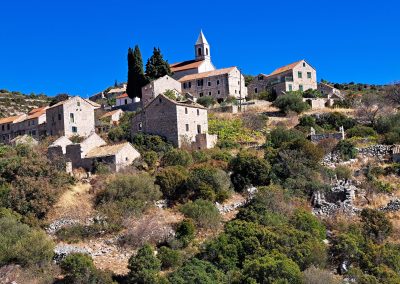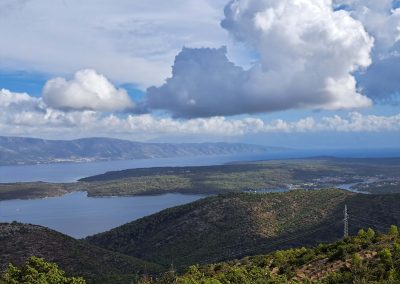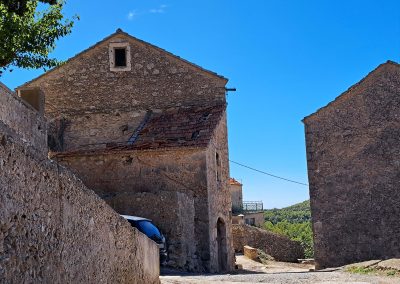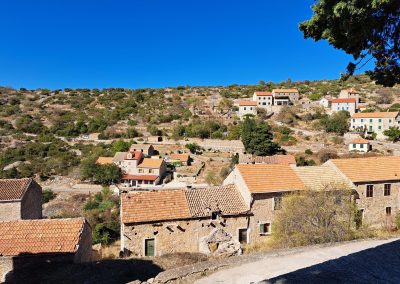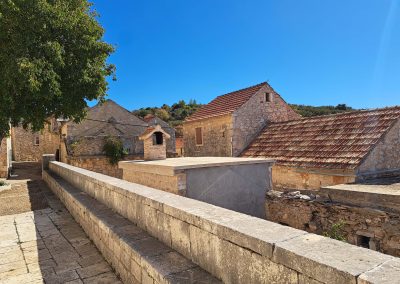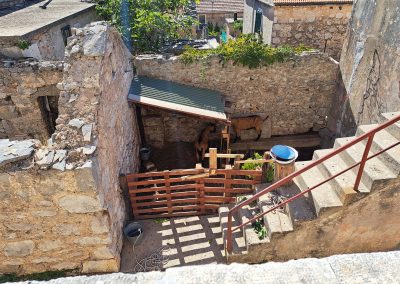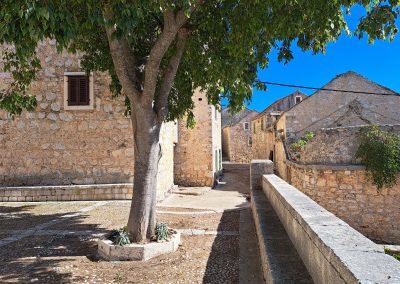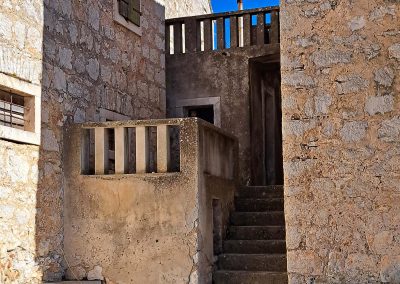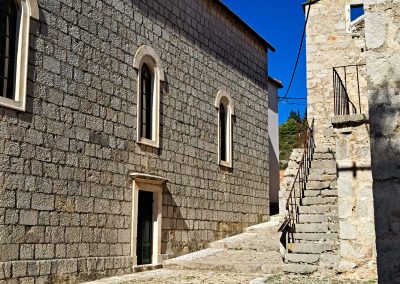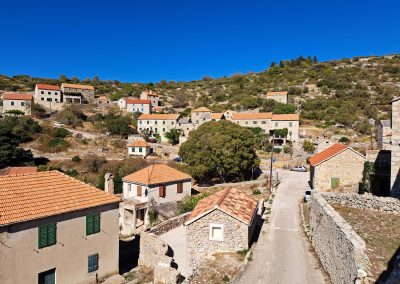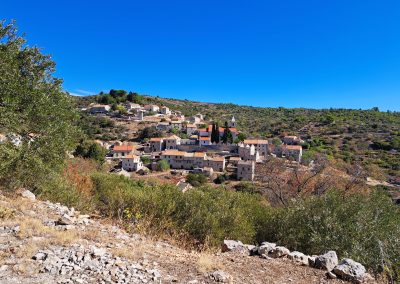Velo Grablje, island of Hvar
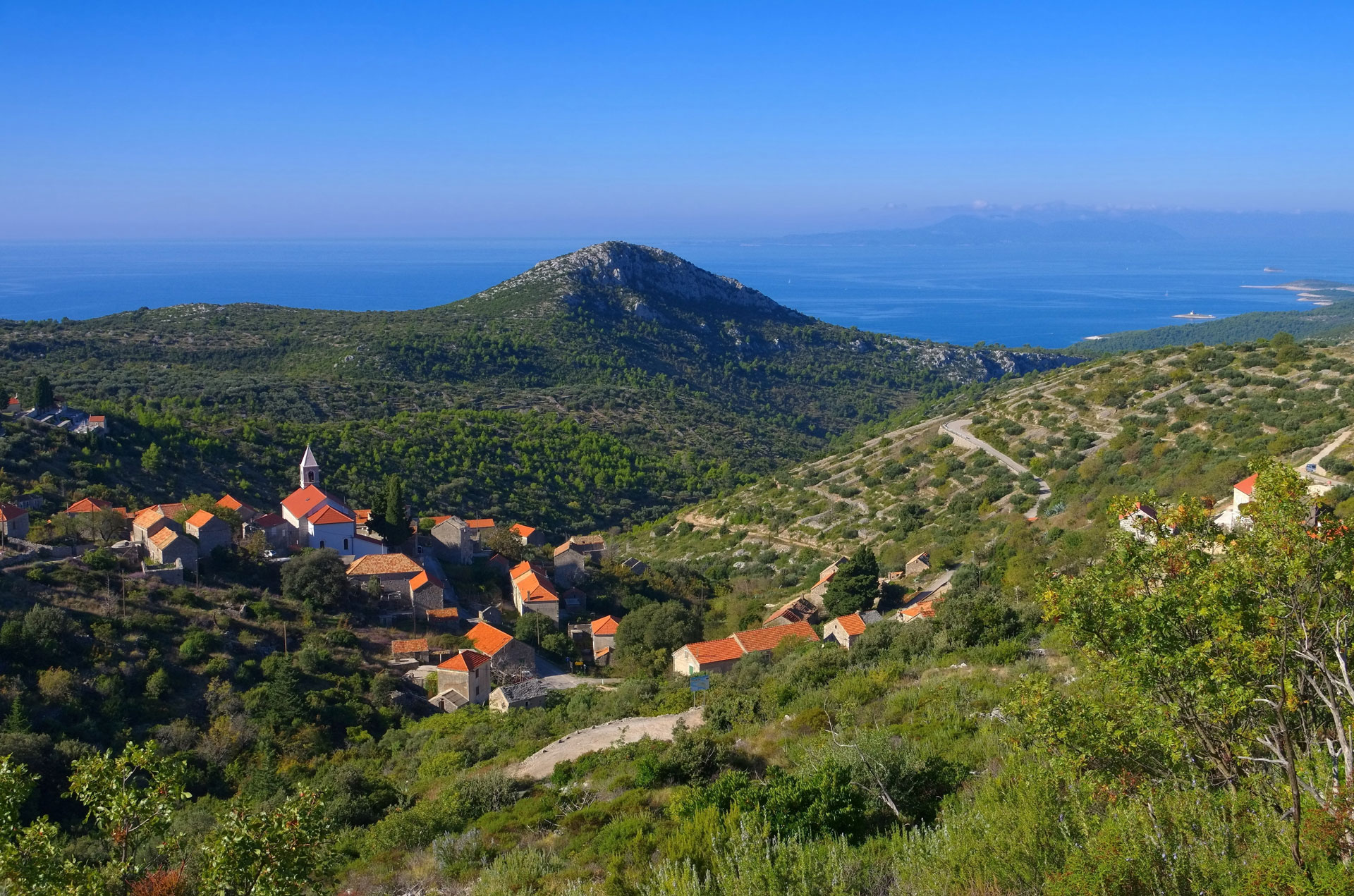
Velo Grablje
The village, which for centuries had around five hundred inhabitants, has dwindled to just seven, with today’s population hovering around twenty. Judging by the appearance of the old cemetery, in the past it was quite prosperous, but it has entered the protection of the “Ethno-Eco Village” together with Mali Grablje, Mala Rudina, Brusje, Zarace, and Humac.
Velo Grablje is named after “grab” (hornbeam) and belongs to the parish of Sts. Cosmas and Damian, with the locals celebrating their patron saints on September 26th. Residents of Velo Grablje who moved to the city of Hvar actively preserve the memory of their village by participating in the Lavanda football club, Lavanda petanque club, and the association for protection and revitalization, “Association Pjover,” which organizes the Lavender Festival in Velo Grablje. As far back as 1892, the “Rosemary Cooperative” was established, producing essential oils and honey.
Internationally known figures include Sandro Zaninovich, an American conductor and composer of Velo Grablje descent, alongside many other creative, skilled, and interesting individuals.
Perched high atop Cesminovo Hill, and further south on Hvar Island, slightly above it lies a viewpoint with the tavern “Alavia,” offering a panoramic view of the “Starigrad Bay,” the island of Brac, all the way to the mainland and Biokovo. Thus, the stretch from Milna to Velo Grablje and Vidikovac is part of a mountain biking route that loops back to Hvar town via Brusje, marking the boundaries of the Hvar municipality. Not far from Vidikovac along the Japjenica road, there’s a monumentally restored lime kiln that, with strong winds like the “tramontana,” received enough air to achieve the temperature needed to melt limestone.
Lastly, greetings from Velo Grablje: “Stay healthy and come… to stay healthy, in the kingdom of essential oils.”
